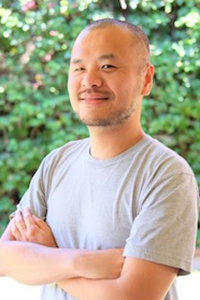Reading and Linking Place:
Text on Historical Maps
Co-located at UCGIS Symposium 2022
Monday June 6 @ Syracuse University
Department of Computer Science and Engineering, University of Minnesota
Overview
With our latest collaboration with the David Rumsey Historical Map Collection, this workshop will introduce and familiarize participants with the latest ready-to-use machine learning and web-based annotation tools for a) efficiently extracting textual information on historical maps, b) linking the texts to external knowledge bases, and c) exporting the linked information. These combined tools help historians, geographers, and librarians to quickly generate useful information from existing digital map collections (e.g., USGS historical topographic maps, the David Rumsey Historical Map collection, historical Ordnance Survey maps).
In particular, we will use the web-based annotation platform, Recogito, integrated with our latest machine learning tool, mapKurator, developed within the Machines Reading Maps project. Our team is actively designing and developing automatic approaches to enrich information and leverage the value of text on maps, which includes predicting semantic types of places and generating geospatial linked data.
We aim to understand any issues and bottlenecks of automatic approaches and create an important communication channel between tool developers and a broad community that uses historical maps, including all users and re-users of the data and metadata we produce. We will provide a set of historical maps and tutorials for hands-on learning. Participants are also encouraged to bring their own maps.
Target audiences:
Anyone who works with historical maps (or just love historical maps)
Workshop requirements:
Please bring your own laptop. We will access Recogito by web browser.
What you will learn:
You will learn how to use the latest tools to extract text information from maps and work with the information. You will also have the opportunity to communicate your needs to the tool developers and learn how to use the tools in your organization.
Please reach out to Jina Kim (kim01479@umn.edu), if you have any questions.
Registration
The workshop is free with the USGIS symposium registration now open at https://ucgis.memberclicks.net/registration-2022-details.
Workshop Schedule *links to the materials will be updated.
- 1:00 pm EDT - 1:30 Welcome & Introduction to the workshop
- 1:30 - 2:00 Recogito & mapKurator demonstration
- 2:30 - 2:40 Break
- 2:40 - 3:20 Hands-on exercises (bring your favorite historical maps / use ours)
- Link to the sli.do (#passcode: 4266808)
- 3:20 - 3:50 Discussion on Recogito & mapKurator results
- 3:50 - 4:00 Break
- 4:00 - 4:30 Open challenges on entity linking (research in progress led by Jina)
- 4:30 - 5:00 Questions, Feedback, and Discussion on how to use mapKurator and Recogito in your institute
Getting Started: Hands-on Exercises
To start, create a free account on Recogito at https://recogito.uksouth.cloudapp.azure.com/
Materials
- Links to map images in Recogito that have been pre-processed with mapKurator
- Historical map of Kent
- Historical map of Minnesota
- Historical map of California
- Historical map of Dublin 1847
- Links to smaller map images
Annotation Guidelines
Step 1: Creating Bounded Boxes
You can use a mix of bounding boxes and bounding polygons for annotation based on the choices below. Note that the bounding boxes should stay in a simple form.
- First choice: axis-aligned bounding box (horizontal/vertical text labels)
- Second choice: rotated bounding box (rotated text labels)
- Third choice: bounding polygon (curved text labels, e.g., river name)
Step 2: Transcribing the text
The annotation pop-up has a "transcription" field. Here is where you are supposed to write the word that you are annotating from the map. Please, transcribe the word exactly as you see it, even if it is an abbreviation, or if the current name may have changed. Use upper or lowercase as they are printed on the map. This information about former names is actually very interesting to us.

